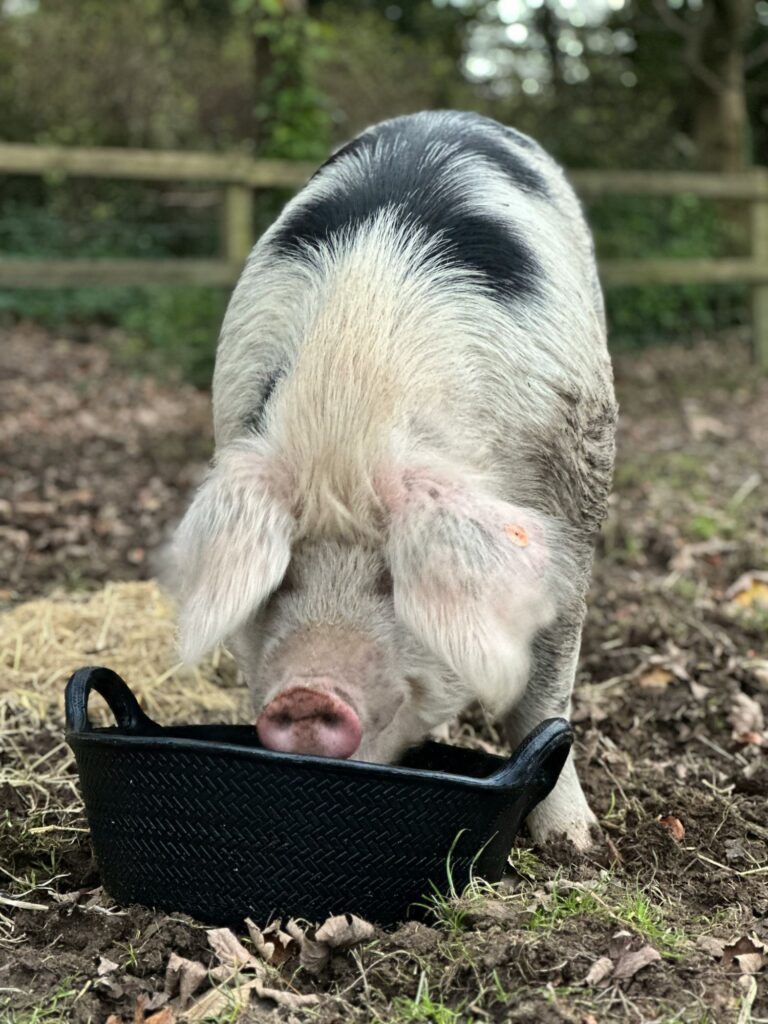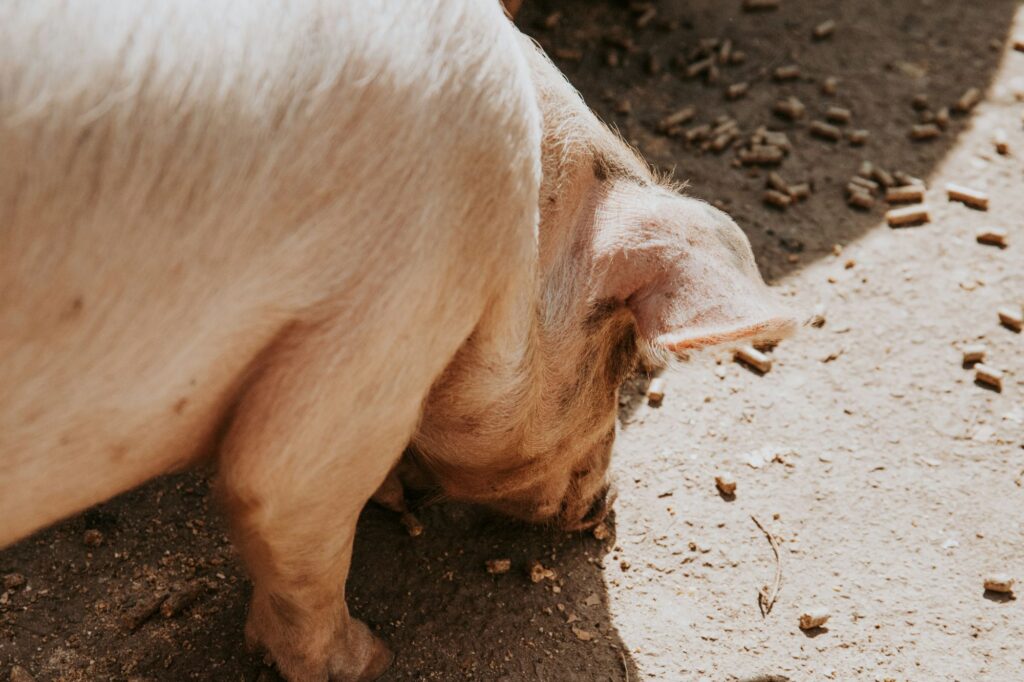
Pig farming is a lucrative venture, but the biggest challenge for most farmers is feeds. Whether you buy commercial feeds or prepare your own, feeding remains the single largest cost in pig production—accounting for 60–70% of total expenses.
Personally, I’ve struggled with feeds for quite a while. To be honest, I’m yet to fully figure it out, and that’s the very reason I maintain a small stock of pigs—usually 3 to 5.
This is the case for most farmers in my area. They prefer to keep only one or two pigs, feeding them on ugali, kitchen leftovers, or by grazing. It’s cheaper that way, though growth is often slow.
A Costly Lesson from a Busia Farmer
I know of a farmer in Nambale, Busia County—a Kenyan based in the US who invested in a fairly big pig farm. He hired a manager and two workers and even invested in modern structures. His breeds are top quality: Landrace, Large White, and Duroc.
Three years down the line, he is yet to recover his investment. His brother admitted to me that he still chips in from personal savings to keep the farm afloat.
The biggest challenge? Feeds.
At the start, they bought quality pig feeds from Uganda, but as pig numbers increased, the costs became unsustainable. They turned to making their own feeds using cassava and other crops from their farm. Unfortunately, without proper knowledge of feed formulation, the pigs grew slowly and fattening took too long.
Even with land, ingredients, and capital, the feed problem remained the biggest bottleneck.
Also read: The cost of remote farming: losses and heartbreaks
When Feeds Scare Farmers Off
Another time, a friend of mine, Musa, came visiting. I asked about his father, a retired professor who had been planning to start a pig project at his school. Musa laughed and shook his head.
“The old man gave up before he even started,” he said.
“Why?” I asked.
“He asked for advice from the wrong person,” Musa replied.
Apparently, his father visited a nearby farm to inquire about pig keeping. The farmer told him how expensive it was to feed pigs—and that was enough to scare him off. He decided to try poultry instead.
But here’s the thing: every animal project requires proper feeding. Poultry are not exempt.

What Farmers Should Know About Pig Feeding
- Feeding is the biggest cost—if you get it wrong, profits vanish.
- Balanced nutrition is key. Pigs need the right mix of protein, energy, vitamins, and minerals depending on their age and stage (weaners, growers, finishers, sows).
- Cheap isn’t always cheaper. Poorly formulated feeds make pigs take longer to reach market weight, costing you more in the long run.
- Quality breeds demand quality feeding. Landrace, Large White, and Duroc won’t perform well on cassava and kitchen scraps alone.
Practical Feed Formulation Guide
Here are sample formulations farmers can use (per 100kg of feed):
1. Pig Starter Feed (weaners, 8–25 kg)
55 kg maize or cassava flour (energy source)
20 kg soybean meal or sunflower cake (protein)
10 kg fish meal (protein)
10 kg wheat bran (fiber + energy)
3 kg bone meal (minerals)
1.5 kg lime (calcium)
0.5–1 kg premix (vitamins and minerals)
Protein content: ~20%
2. Grower Feed (25–60 kg pigs)
60 kg maize or cassava flour
18 kg soybean meal or sunflower cake
10 kg fish meal
8 kg wheat bran
3 kg bone meal
0.5–1 kg premix
Protein content: ~16–18%
3. Finisher Feed (60 kg to market weight)
70 kg maize or cassava flour
15 kg soybean meal or sunflower cake
8 kg wheat bran
5 kg fish meal
2 kg bone meal
0.5–1 kg premix
Protein content: ~14–16%
Here’s a Practical Feed Formulation Guide for Busia and Kenyan farmers at large with access to local ingredients like cassav, omena, sweet potatoes, etcetera.
The following are sample formulations farmers can use (per 100kg of feed). Adjust quantities slightly depending on ingredient availability.
1. Pig Starter Feed (weaners, 8–25kg)
30 kg maize grain (energy)
20 kg cassava flour (energy)
18 kg omena (fish) or fishmeal (protein)
15 kg soybean meal or sunflower cake (protein)
10 kg wheat bran or maize bran (fiber + energy)
5 kg sweet potato vines (dried and ground, vitamins + fiber)
1.5 kg bone meal (calcium + phosphorus)
0.5–1 kg premix (vitamins & minerals)
Protein content: ~20%
2. Grower Feed (25–60kg pigs)
35 kg maize grain
25 kg cassava flour
15 kg omena/fishmeal
10 kg sunflower cake or soybean meal
10 kg wheat bran or maize bran
3 kg dried sweet potato vines or lucerne (vitamins + fiber)
1.5 kg bone meal
0.5–1 kg premix
Protein content: ~16–18%
3. Finisher Feed (60kg to market weight)
40 kg maize grain
30 kg cassava flour
10 kg wheat bran or maize bran
8 kg omena/fishmeal
8 kg sunflower cake or soybean meal
3 kg dried sweet potato vines (fiber + vitamins)
1 kg bone meal
0.5–1 kg premix
Protein content: ~14–16%
Local Tips for Busia/Kenya Farmers
Cassava & maize bran are cheap fillers but must be balanced with protein (omena, sunflower, or soy).
Sweet potato vines can be dried and milled to add fiber and vitamins.
Omena is an affordable protein source compared to fishmeal.
Group buying premixes with other farmers reduces costs.
Always sun-dry cassava properly to remove toxins before milling.
Advantages of Making Your Own Feeds
✅ Saves money if ingredients are available locally
✅ Flexibility to use what you grow (cassava, maize, sweet potato vines)
✅ Reduces reliance on suppliers
✅ Control over feed quality and safety
Disadvantages of Making Your Own Feeds
❌ Requires technical know-how
❌ Risk of nutritional imbalances if done incorrectly
❌ Time-consuming and labor-intensive
❌ Initial investment in equipment and storage facilities
Tips for Success
Always include a premix for vitamins and minerals.
Grind and mix ingredients properly for uniformity.
Monitor pig growth—if they fatten too slowly, adjust the formula.
If possible, work with an extension officer or animal nutritionist.
Final Word
Pig farming success or failure often comes down to feeds. Commercial feeds are convenient but expensive. Making your own feeds can save costs but requires knowledge, discipline, and consistency.
Don’t let feeds scare you away from pig farming. Instead, face the challenge with proper planning and learning. With the right formulation, pigs can be one of the most rewarding livestock ventures.

Disclosure: This banner contains an affiliate link. I may earn a commission if you purchase through it, at no extra cost to you.
